Moving into Fall and Winter
October can be a wonderful time in the garden. While the glories of summer may be behind us, it does not mean the end of color and interest in the garden. There are shrubs and trees that offer fall leaf color ranging from butter yellow, to orange, to glorious red. Many reveal interesting architecture and exfoliating bark when their leaves drop, drawing your attention throughout the winter. Others have berries that add vibrant color to the landscape. Here are some options to explore which will create fall and winter interest in the landscape.
Shrubs
Amelanchier ‘Autumn Brilliance’ (Serviceberry)
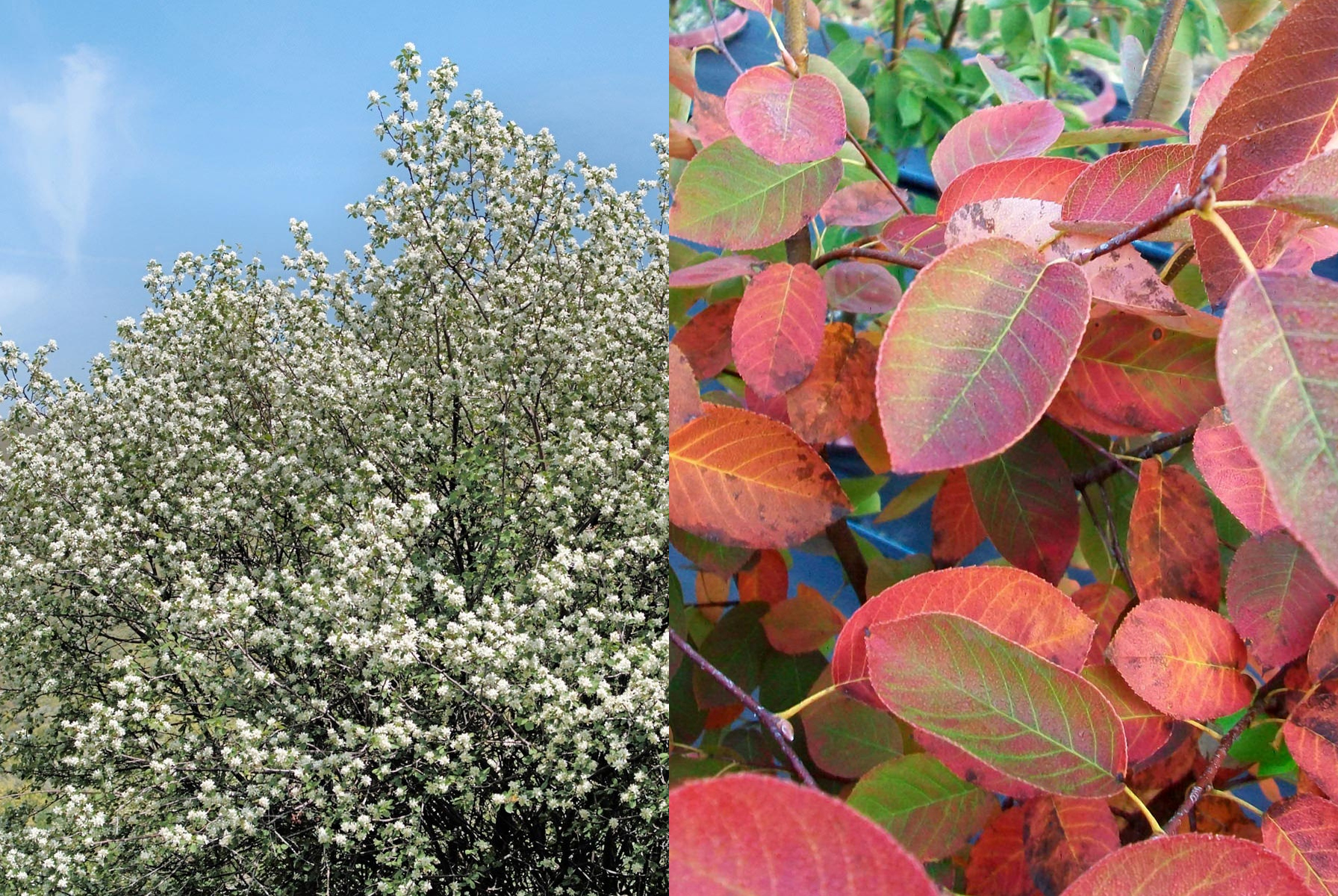
This variety of our native Serviceberry lives up to its name. Its young leaves are bronze, mature to green, and turn brilliant orange and red in the autumn, all on multiple upright, highly branched stems, forming a small multi-stemmed tree. ‘Autumn Brilliance’ has spectacular 5-petaled, showy and slightly fragrant white flowers that are larger than those of other Amelanchiers. They appear in early spring in drooping clusters (racemes) before the leaves emerge. The flowers are at first tinged with pink, later fading to white. They give way to small round green berries which turn red and finally mature to a dark purplish black in the early summer. The edible berries are sweet and often used in jams, jellies and pies. The birds will find them as attractive as you do, so you may have to decide whether you will get more pleasure from your homemade jam or having feathered friends drawn to you garden.
Azalea (deciduous): When we think of azaleas, we tend to think of the evergreen azaleas that are staples in front yard plantings. Less well known are the deciduous azaleas. They are more upright in habit and tend to bloom a little later than the evergreen varieties, but are well worth the wait. Whether you choose a pink, yellow or orange flowering variety, they are highly fragrant. As autumn approaches, the leaves turn glorious shades of red, orange and yellow.
Clethra alnifolia (Summersweet): This native shrub is a late summer bloomer, producing fragrant, narrow upright panicle-shaped flowers in white or pink that are a magnet for butterflies and bees. An upright shrub, it performs well in sun or part shade. It grows in regular garden conditions and can also be used in moist spots. Its glossy, dark green leaves turn warm yellow in the autumn. ‘Ruby Spice’ has fragrant, deep pink flowers and grows 4’-6’ high and wide. ‘Hummingbird’ is a more compact growing variety at 3’-4’ and has fragrant, long-lasting white flowers. It is a great option for smaller gardens.
Cornus alba ‘Ivory Halo’ (Red twig Dogwood):
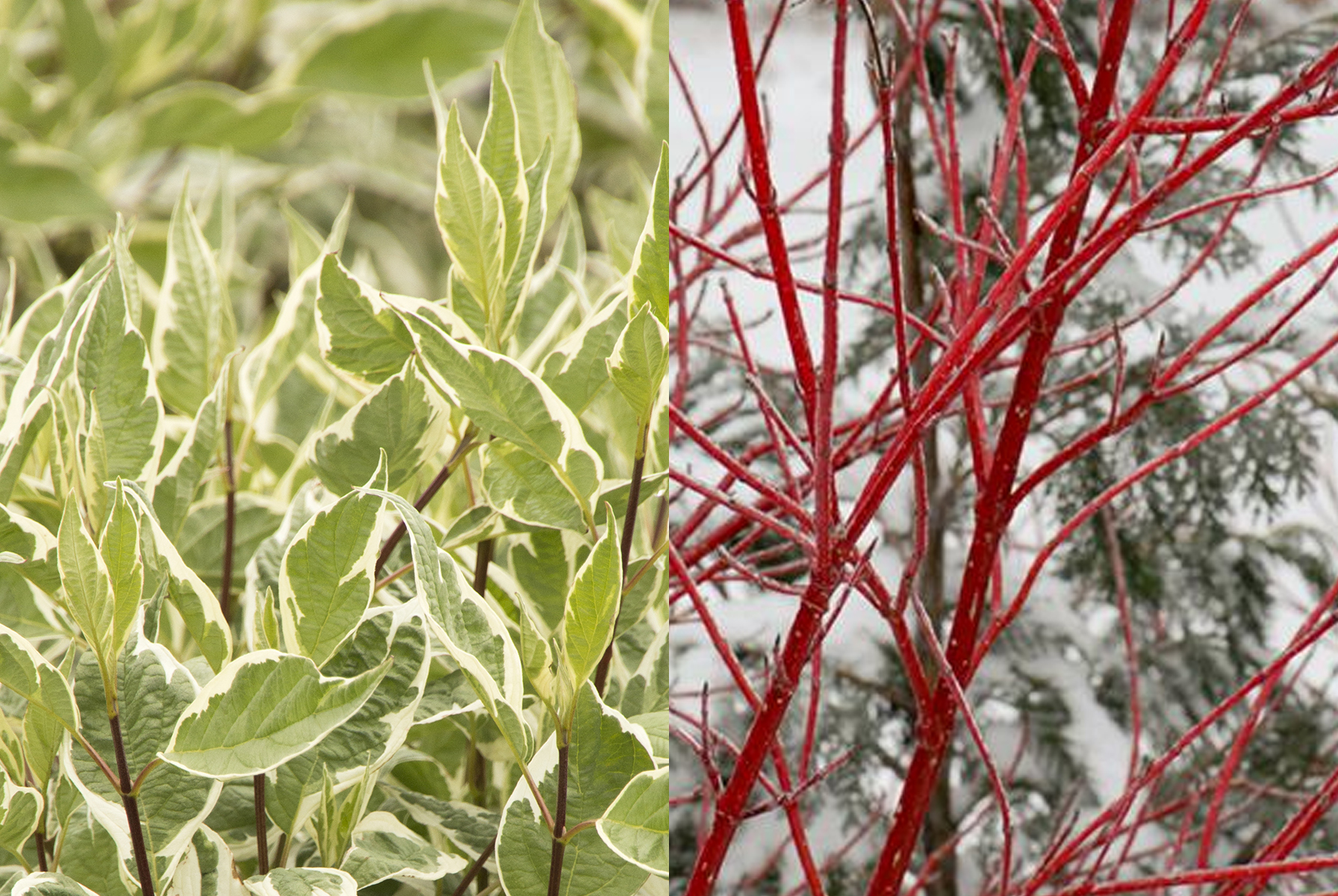
This is one of the most versatile shrubs for the residential landscape. It is happy in conditions ranging from full sun to the shade of a north facing garden. Light green leaves have an ivory margin (hence the variety name), and blow in even the slightest breeze. It complements whatever is planted next to it and will light up a shady garden. When the leaves drop, its many bright red stems stand out against the snow or against the foundation of your house. ‘Ivory Halo’ grows 4’ high and wide.
Cornus sericea ‘Arctic Fire’ (Red osier Dogwood): This is a compact selection which has dark red winter stems. It grows 3’-4’ feet tall and wide.
Enkianthus (Red Vein Enkianthus): This is a lovely shrub that deserves wider use in the residential landscape. It is an upright deciduous shrub that grow 6’-8’ tall and 3’-4’ wide in time. It has tiny, bell- shaped nodding flowers that look like lily-of- the-valley flowers. They are creamy white to pale pink with slim red stripes and edges. The small leaves are bluish-green and are grouped at the branch tips. The overall effect is one of great delicacy. It is hard to imagine that such a delicate looking shrub can become such a riot of color in the fall. Leaves offer red, orange and yellow tones that are absolutely beautiful.
Fothergilla:
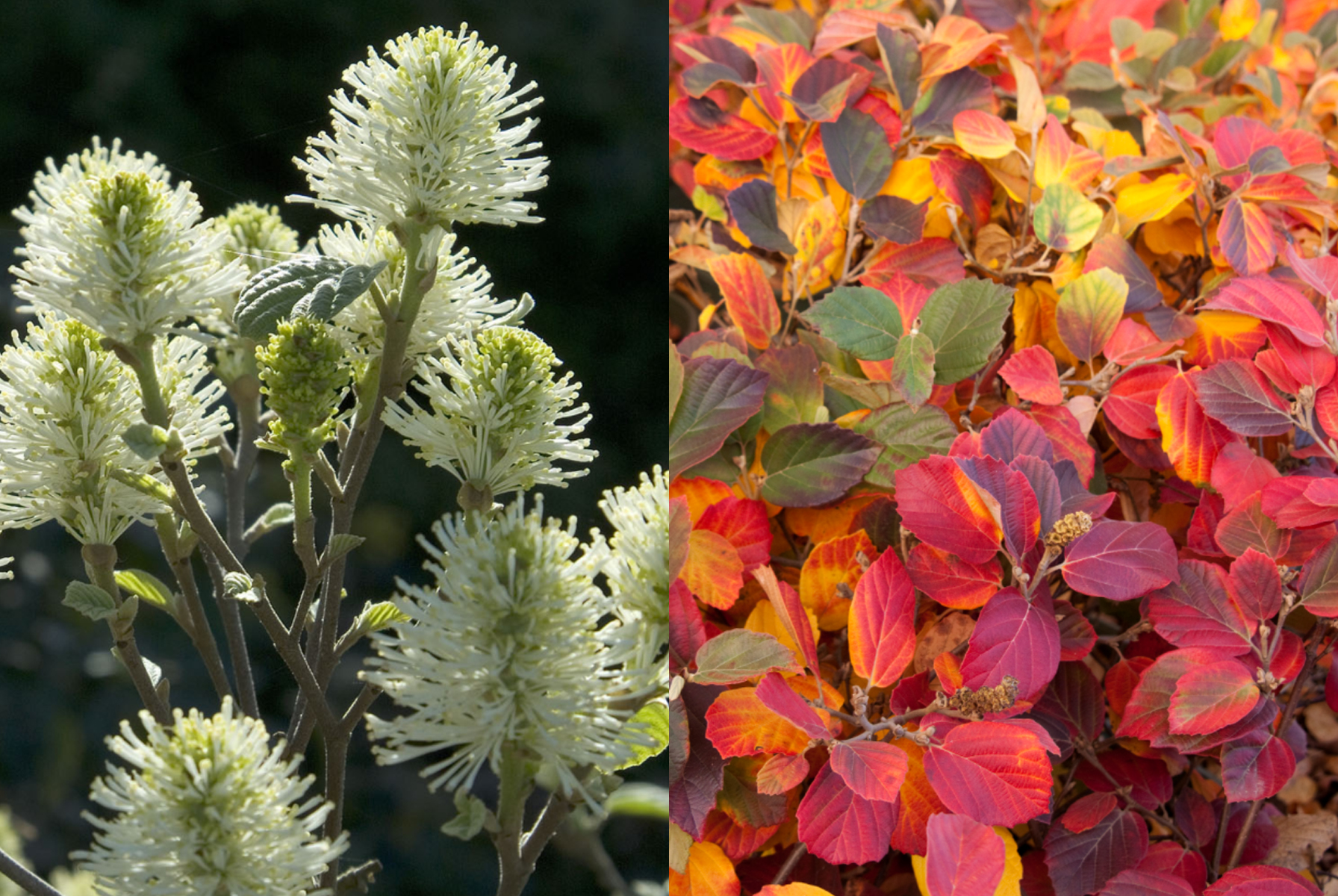
This slow-growing deciduous shrub has fragrant white, bottlebrush-like flowers that appear in early spring. Some people describe the flowers as honey-scented. The unusually shaped leaves are rounded at the base and have slightly pointed edges from the mid-point to the tip. The show really takes off in fall when leaves turn shades of yellow, orange and red. Fothergilla gardenia is referred to as dwarf Fothergilla, growing 2’-3’ tall and wide. ‘Mt Airy’ is a hybrid of two species and grows 3’-5’ tall and wide. ‘Blue Shadow’ is similar to’ Mt. Airy’ but has beautiful powder blue foliage. ‘Blue Mist’ is a more compact variety, growing 2’-3’, with the same intense blue foliage. Fothergilla will grow happily in full sun to moderate shade.
Hydrangea quercifolia (Oakleaf Hydrangea): This multi-stemmed deciduous shrub is unlike the familiar hydrangea. Flowers are upright 12” long pyramidal panicles that open white and age to tones of pink and red. Large leaves resemble oak leaves in shape and turn a beautiful mahogany color in autumn. The cinnamon colored bark exfoliates, creating wonderful winter interest.
Ilex verticillata (Winterberry):
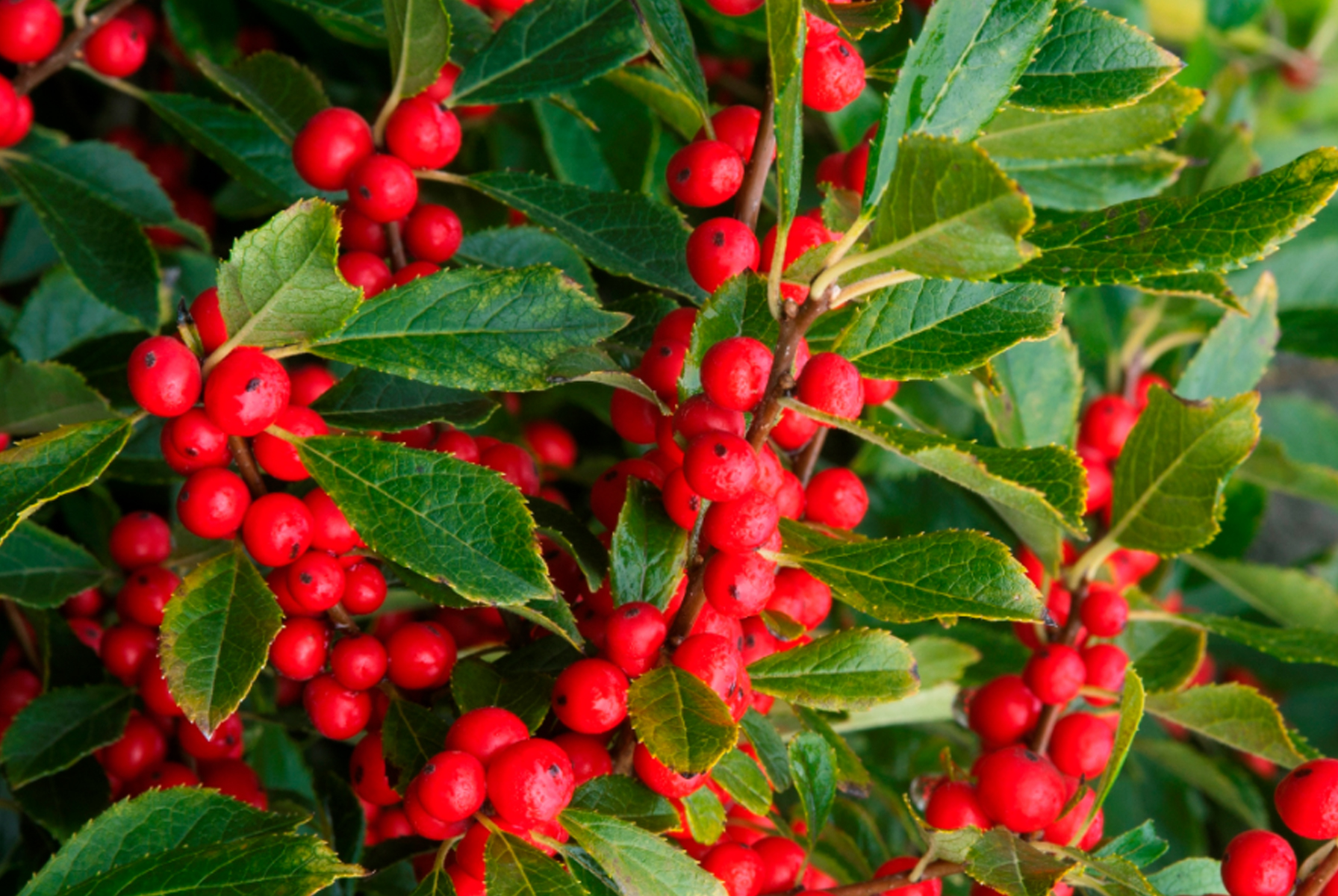
This shrub is native to the eastern United States. It produces bright red berries that persist throughout the winter (hence the common name) and often into early spring. It grows in full sun to part shade. Female forms such as ‘Red Spite’ require a male pollinator such as ‘Jim Dandy’ in order to produce the red berries. There is nothing like these showy berries to add a pop of welcome color in the depths of winter.
Itea (Sweetspire):
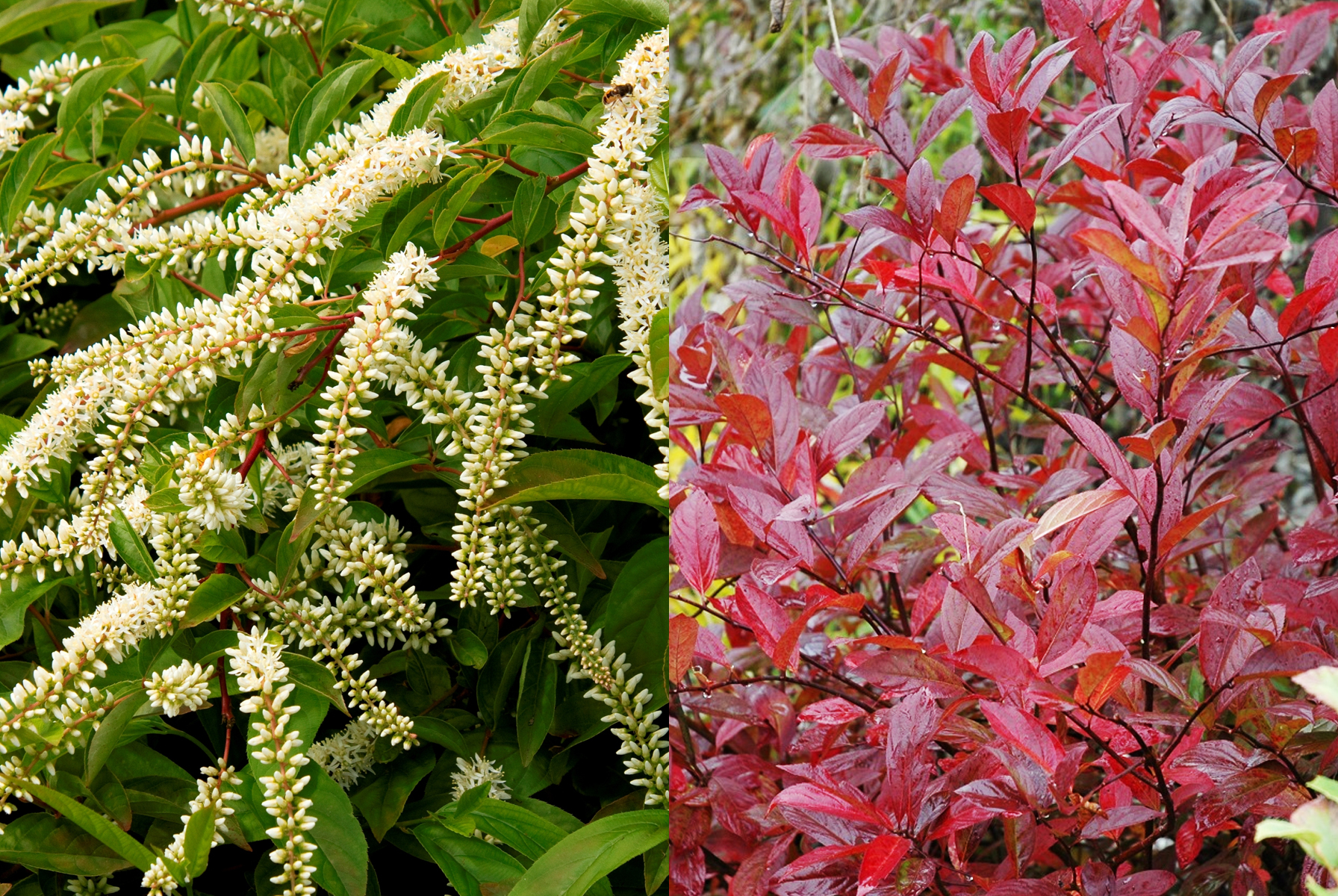
This is a lovely deer resistant native shrub that produces loads of long, pendulous white flowers that remain attractive through summer. It is a rounded shrub with gently arching branches. The bright green leaves of summer turn wonderful shades of red and orange in the autumn. ‘Henry’s Garnet’ grows 4’ tall while ‘Little Henry’ grows just 3’ tall.
Viburnum: There are many varieties of Viburnum, all of which offer interesting flowers, berries, leaf texture and beautiful red to mahogany colored foliage in the autumn. ‘Brandywine’ is one example, offering pink and blue berries, followed by glossy dark red to maroon fall foliage.
Trees
Deciduous Trees: Deciduous trees drop their leaves in the autumn. While we value their summer leaves and the shade they provide, they are to be valued for other features. Many offer beautiful bark and elegant architecture which enhances the autumn and winter landscape. Here are a few to consider:
Acer griseum (Paperbark Maple): This maple has slender upright branches. Its soft green leaves turn shades of orange and scarlet in fall. It becomes more distinctive and elegant with age, as its papery sheets of bark peel back to reveal cinnamon-brown new bark. This tree makes a lovely specimen in any landscape, including today’s smaller home landscape.
Acer palmatum (Japanese Maple):
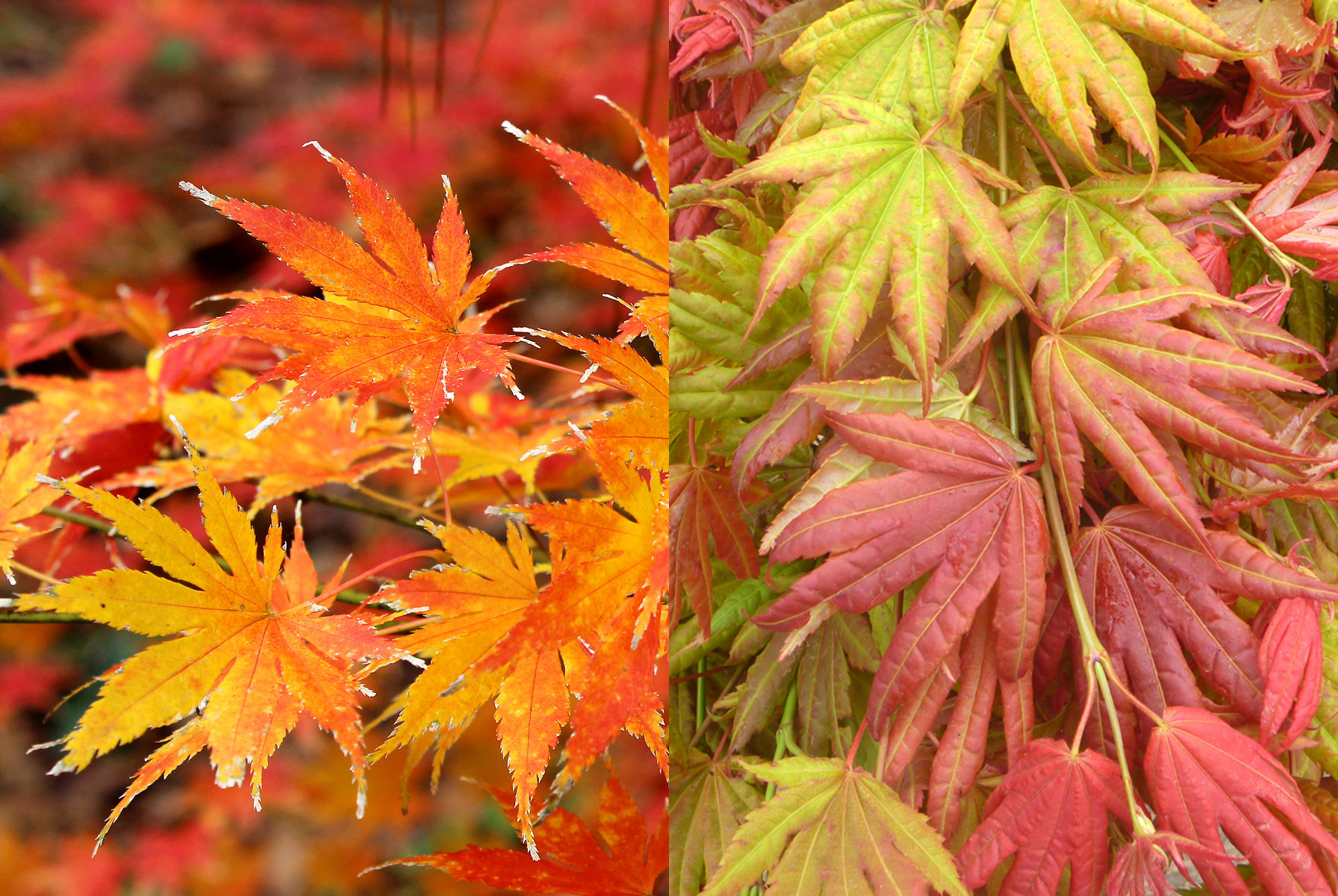
Japanese maples are lovely and distinctive small trees for the home landscape. The varieties are almost infinite and all produce wonderful fall color, including shades of yellow, orange, red and bronze. They do best with some shade as full sun conditions can burn leaf edges.
Acer rubrum (Red Maple): Our beloved red maples add a rich dimension to the autumn landscape. Rubrum, meaning red, is in evidence everywhere: red flowers, red fruit, red stems and twigs, red buds and in fall, red and orange toned foliage. ‘October Glory’ is a variety that provides exceptional fall color.
Betula nigra ‘Heritage’ (Heritage River Birch): This fast-growing deciduous tree, often grown in a clump of 3 stems, provides a sense of airiness to the landscape with its tall canopy that moves in the wind. The green leaves of spring and summer turn warm yellow in the fall. It features salmon-cream to brownish bark which exfoliates to reveal a creamy white inner bark, providing wonderful winter interest.
Cercidiphylum japonium (Katsura Tree): This deciduous shade tree has a dense, rounded habit and is grown for its beautiful shape, shaggy bark and attractive heart shaped leaves. The color, too, is exceptional. The leaves emerge reddish purple in spring, mature to medium green with a slight bluish tinge in summer and turn wonderful shades of gold, orange and red in the fall. The fallen autumn leaves have been varyingly described as smelling of cinnamon, burnt sugar or ripe apples. This unusual shade tree truly has multi-season interest.
Cornus florida and Cornus kousa (Dogwood): Dogwoods are small, understory trees that offer multiple seasons of interest. Cornus florida varieties such as ‘Cherokee Chief’, ‘Cherokee Brave’ and ‘Cherokee Princess’ bloom in early spring before the leaves appear. Cornus kousa varieties such as ‘Milky Way’ flower a month later, after their leaves have appeared. No matter your choice, the deep pink, red and purple tones of the autumn foliage add tone and dimension to the landscape.
Gingko biloba ‘Autumn Gold’ (Maindenhair Tree): This lovely tree has unique fan-shaped green foliage that turns brilliant golden yellow in fall. Its symmetrical branching creates an exceptional upright landscape accent, and it becomes a handsome shade tree with age. Interestingly, it is the only surviving member of a group of ancient plants believed to have inhabited the earth up to 150 million years ago.
Nyssa sylvatica ‘Wildfire’ (Tupelo): One of the most beautiful native trees of North America, this variety has excellent pyramidal form that displays brilliant, neon red fall color. It is one of the most stunning autumn foliage choices. The new spring growth is orange-red, changing to glossy green as it matures. Winter interest comes from its strong branching structure and dark bark, creating a stunning silhouette.
Prunus (Flowering Cherry): Whether you choose the spectacular show of double flowered pink blossoms on pendulous branches of the Weeping Higan Cherry, or the pure white cloud of delicate flowers of the Yoshino Cherry, or the large ruffled pink flowers of the Kwanzan Cherry, you will have a beautiful spring show. And it is worth noting that the foliage of Cherry trees turns a warm yellow color in autumn.
Stewartia pseudocamellia: This is a small, slow-growing, pyramidal deciduous tree. It has showy cup- shaped flowers with orange-yellow centers, similar in appearance to camellia flowers. The green foliage turns attractive shades of reddish-orange and burgundy in autumn. The bark of the Stewartia is extraordinary. It exfoliates, showing colors of reddish-brown, grey and orange, providing winter color, texture and interest.
The Value of Evergreens: New England has a rich and beautiful community of conifers and evergreen plants which provide welcome color and structure in the garden in the depths of winter. They offer sculptural and architectural qualities and serve as the backdrop to other plantings. In addition, they offer protection for birds. One of winter’s joys is to watch the activity at a birdfeeder placed near a conifer, as the birds alternately perch on the branches and swing over to the feeder. Bird baths and pieces of sculpture also offer points of interest in the winter landscape.
Perennials:
There are a surprising number of perennials that bloom into the fall season. Here are a few to consider.
Aconitum (Monk’s Hood)
Amsonia hubrectii
Anemone (Japanese Anemone) ‘Honorine Jobert’, ‘September Charm’
Ceratostigma plumbaginoides (Plumbago)
Chelone (Turtlehead)
Geranium ‘Rozanne’
Heuchera
Ornamental Grasses
Sedum
Note: Not all perennials have to be cut back in the fall. Think of the plants that have interesting texture or have seeds that can attract birds to your yard, such as Echinacea (coneflowers), Rudbeckia (Black eyed Susan), Sedum, ornamental grasses and sunflowers.
